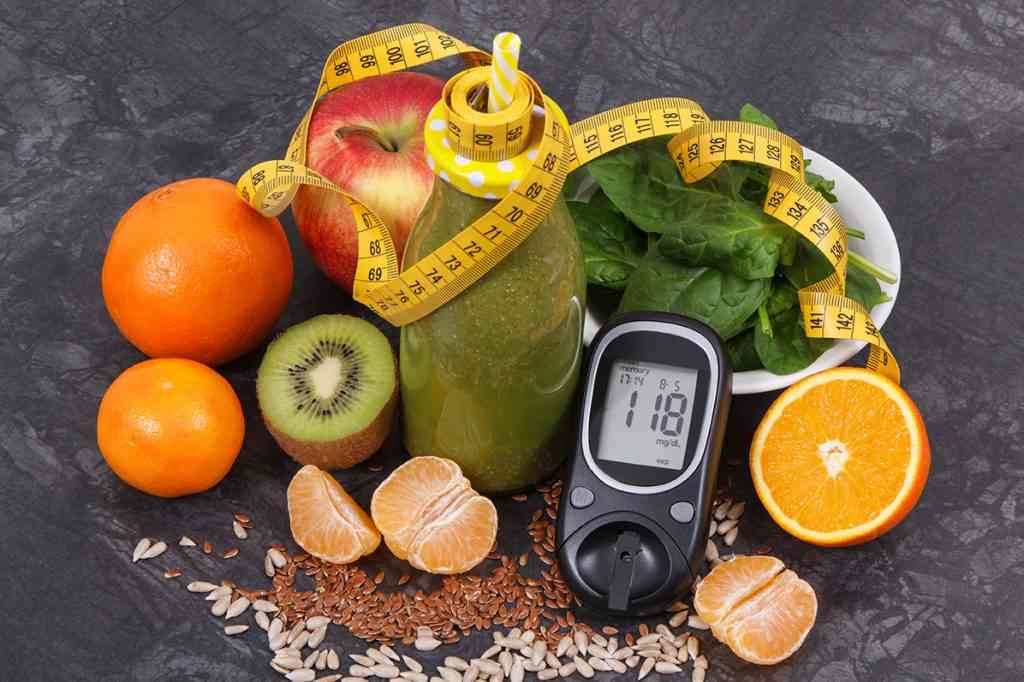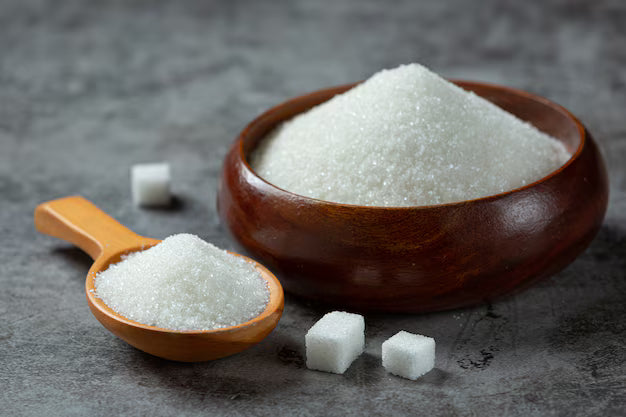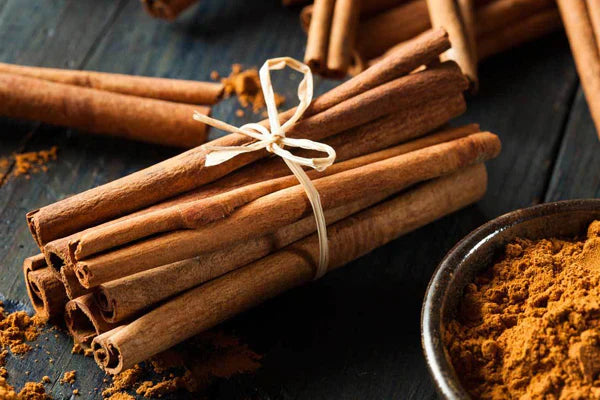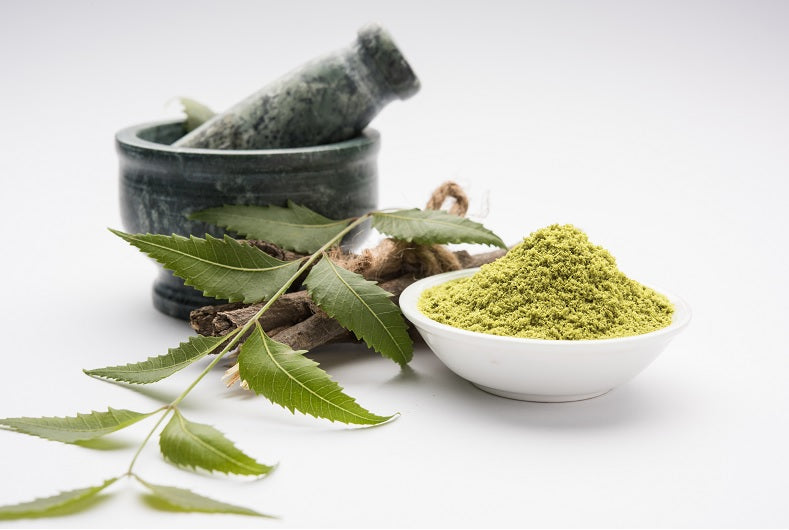
Managing Diabetes Naturally with Ayurveda: Herbs, Lifestyle & Remedies
13 Oct, 2025Understanding Diabetes in Ayurveda (Madhumeha) In Ayurveda, diabetes mellitus is known as Madhume...
Read more
In Ayurveda, diabetes mellitus is known as Madhumeha, a subtype of Prameha, a group of urinary and metabolic disorders described in classical texts like Charaka Samhita and Sushruta Samhita. The hallmark features are Prabhootha Mutrata (excessive urination) and Avila Mutrata (turbid urine).
Ayurveda considers Madhumeha as arising from dosha imbalance, primarily Kapha and Vata, along with vitiation of Medo Dhatu (fat tissue) and depletion of Ojas (vital energy). The root causes include impaired Agni (digestive fire), formation of Ama (toxic residue), and obstruction in bodily channels (srotas), leading to insulin resistance, poor sugar metabolism, and fatigue.
Sedentary lifestyle, excessive rest, and daytime sleeping
Overeating heavy, oily, and sweet foods (Guru Ahara)
Excessive intake of milk, curd, fish, and freshly harvested grains
Cold food and drinks are taken habitually
Stress, irregular sleep, and Kapha-aggravating habits
In Ayurveda, prameha refers to urinary and metabolic disorders. A subtype of the condition is vataja prameha or diabetes, which occurs when prameha reaches an advanced state. Prameha may be hereditary or acquired due to poor lifestyle habits. The condition is generally seen to manifest in obese body types. Ayurveda also holds that the condition may occur due to the dominance of certain dosha subtypes.
Check out how to Reverse Diabetes Naturally—->
According to Ayurveda, managing Madhumeha (diabetes) is not limited to controlling blood sugar levels; it focuses on correcting doshic imbalances, improving Agni (digestive fire), eliminating Ama (toxins), and rejuvenating the Dhatus (tissues). Treatment integrates Rasayana therapy, pathya-ahara (wholesome diet), vihara (lifestyle), and yoga to achieve long-term balance.
Acharya Vagbhata has described Rasayana therapy as an essential component in the management of Prameha. Rejuvenative herbs and minerals such as Shilajita, Swarnamakshika, Rajatmakshika, and Tuvaraka are indicated for strengthening metabolism, improving tissue nourishment, and preventing diabetic complications.
Because Prameha involves almost all the Dhatus (except Asthi) and Ojas, continuous use of Pathya (wholesome regimen) and Rasayana is crucial to minimize complications.
Diet plays a central role in regulating blood sugar and preventing complications. Foods are selected to balance Kapha and Medas, stimulate Agni, and avoid further Ama formation.
Recommended Food Groups:
Cereals (Śūkadhānya): Jeerna Shali (old rice), Shashlika, Kodrava, Yava (barley), Godhuma (wheat), Shyamaka.
Pulses (Śimbidhānya): Chanaka (Bengal gram), Adhaki (pigeon pea), Kulatha (horse gram), Mudga (green gram).
Vegetables (Śāka Varga): Bitter and astringent leafy greens such as Patola (pointed gourd), Karavellaka (bitter gourd), Shigru (drumstick).
Fruits (Phala Varga): Jambu (jamun), Dadima (pomegranate), Amalaki (Indian gooseberry), Kapittha (wood apple), Tinduka, Kharjur (dates in moderation), Kalinga (watermelon).
Meat (Mamsa Varga): Light, dry meats of Jangala animals and birds like Vishkira, Pratuda.
Oils (Taila Varga): Danti, Ingudi, Sarshapa (mustard), Atasi (flaxseed).
Water (Udaka Varga): Sarodaka, Kushodaka, Madhudaka (water mixed with honey).
Prepared foods (Kritanna Varga): Light meals like Saktu, Yavodana, Yusha.
Others: Madhu (honey), Hingu (asafoetida), Saindhava (rock salt), Maricha (black pepper), Lasuna (garlic).
Ayurveda recommends starting with light meals (Laghu Ahara) and gradually increasing quantity according to Agni status. Monitoring digestion and metabolism is essential since diabetes originates from Agni mandya (low digestive fire).
Ayurveda recommends focused and enhanced physical activities for diabetics to tackle the accumulated fat tissue and pacify Kapha. Martial arts, strenuous sports, horse riding, and brisk walking are some activities suggested, depending on individual conditions.
Add ‘dry’ foods such as ancient grains like millet, and nutrient-packed fruits such as amla to your daily diet. Avoid naturally greasy foods. Lead a disciplined life and control excesses.
Maintain personal hygiene and apply healing pastes made of aromatic herbs such as Ushira, Twak, Ela, Aguru, and Chandana to your body – this helps prevent prameha.
Yoga enhances metabolic activity and supports insulin sensitivity.
Recommended practices include:
Asanas: Paschimottanasana, Kurmasana, Halasana, Mayurasana, Surya Namaskara
Pranayama: Bhastrika
Regular practice of yoga helps improve digestion, metabolism, and mental balance, key factors in diabetes control.
Several single herbs and formulations are described for regulating blood sugar:
Bhumyamalaki juice with black pepper powder for chronic cases
A decoction made from Haridra, Daruharidra, Triphala, and Yava, soaked overnight and taken with honey in the morning, helps eliminate Prameha from the root.
The word literally means ‘destroyer of sweetness’. The herb supports healthy insulin secretion, helps regenerate pancreatic beta cells, and enhances glucose utilisation.
It also acts as a mild diuretic and supports lipid metabolism.
Ayurvedic action: Kaphahara, Medohara
One of the most powerful anti-inflammatory and antioxidant herbs, Giloy helps balance blood sugar by improving insulin sensitivity and reducing oxidative stress. It is often combined with Amla and honey for effective prameha management.
Ayurvedic action: Kaphapittahara, Lekhana
Rich in Vitamin C and rejuvenating properties, the fruit strengthens the liver and pancreas while promoting healthy glucose metabolism. It enhances ojas and acts as a rasayana, reducing diabetic fatigue and debility.
Ayurvedic action: Tridoshahara, Rasayana
Mentioned by Acharya Vagbhata as a key rasayana for prameha, the naturally occurring resin enhances cellular energy, improves glucose metabolism, and strengthens tissue regeneration. It also acts as a powerful adaptogen and rejuvenator, combating diabetic weakness.
Read the complete guide to Shilajit Benefits–>
Ayurvedic action: Kapavata Shamaka,medohar Rasayana, Yogavahi
This herb is known to help in liver detoxification and metabolic regulation. It also aids in lowering blood glucose and supporting digestion, and is useful in chronic and resistant forms of prameha.
Ayurvedic action: Pittahara, Deepana, Pachan
This is a classical wood that helps tackle diabetes. Drinking water stored in Vijaysar cups helps regenerate pancreatic beta cells and stabilise postprandial glucose levels. It also supports lipid metabolism and weight control.
Ayurvedic action: Kaphahara, Medohara, Pramehahara
Known for its strong detoxifying and purifying effects, Neem helps reduce excess sugar and fat accumulation in tissues, and supports healthy digestion and liver function.
Ayurvedic action: Tikta Rasa Pradhana, Kapha-Pitta Shamaka, Kleda-Nashaka
This classic Ayurvedic formulation balances doshas and promotes digestive and metabolic health. It also enhances nutrient assimilation and helps in mild detoxification. Regular use supports bowel health and glucose regulation.
Ayurvedic action: Deepana, Pachan, Rasayana, Pramehahara
This is a bitter tonic with strong anti-diabetic and liver-protective properties. It helps improve insulin response and supports bile secretion for better fat metabolism. It is commonly used with Haridra and Triphala for comprehensive diabetes care.
Ayurvedic action: Tikta Rasa, Kapha-Pitta Shamaka, stimulates liver
Soak 2 tsp of methi seeds overnight – in the morning, drink the water and chew the seeds on an empty stomach.
Mix 1 tsp amla powder and ¼ tsp haldi in a glass of warm water and drink up.
Have 2 tsp karela juice on an empty stomach daily - this helps manage blood sugar.
Have the fresh extract of about 7-8 kundru (ivy gourd) leaves, good for sugar control.
Replace your regular wheat flour (atta) with barley flour.
Glucomap Tablets: Clinically tested, supports sugar control, restores pancreatic health, reduces HbA1c. Contains 25 synergistic herbs, including Shilajit processed with Salsaradi Gana.
Amrit Kalash (MAK): A Rasayana that restores Ojas and prevents complications.
Giloy Satva: Strengthens immunity and metabolism.
Ayurveda teaches that diabetes is a lifestyle disorder (Anushangi Vyadhi). It cannot be “cured” permanently, but it can be managed naturally and effectively with the right combination of:
Diet and lifestyle adjustments
Herbal medicines and Rasayana therapy
The goal is to improve Agni, restore Ojas, and balance the Dhatus, leading to sustainable sugar control.
Prabhootha Mutrata – Excessive urination (polyuria)
Avila Mutrata – Turbid or cloudy urine
Kara-Pada Daha – Burning sensation in hands and feet
Mukha, Talu, Kantha Shosha – Dryness of mouth, palate, and throat
Pipasa – Excessive thirst
Aalasya – General fatigue and laziness
Kaya Malam – Unclean or sticky body feeling
Shatpadapipilikabhi-Mutrabhisaranam – Attraction of ants to the urine
Gala-Talu Shosha – Dryness in throat
Dantadinam Maladhyatam – Coating or sliminess on teeth and gums
Frequent urination (polyuria)
Excessive thirst (polydipsia)
Increased hunger (polyphagia)
Unexplained weight loss
Giddiness, weakness, or body ache
Numbness or tingling in hands and feet
Blurred vision or visual disturbances
If you experience any combination of these symptoms, especially persistent thirst, excessive urination, unexplained fatigue, or weight loss, or if your blood reports show your HbA1c is high, urine shows the presence of sugar, and Blood sugar is also elevated, consult a doctor promptly
Regular monitoring, appropriate diet, and lifestyle management under the guidance of a qualified practitioner can help maintain long-term balance and vitality.
Book a Consultation with Maharishi Ayurveda Experts for personalized diet, lifestyle, and herbal support.
Diabetes management is not about quick fixes but about a sustainable lifestyle shift. Ayurveda provides safe, natural, and time-tested tools from herbs like Gudmar, Giloy, and Jamun to Rasayana therapies, diet, and yoga to restore balance, reduce symptoms, and prevent complications.
Ready to take charge of your health? Explore Maharishi Ayurveda’s Herbal Diabetes Solutions
Yes. Ayurveda complements allopathic care by addressing causes via diet, lifestyle, herbs, and exercise. Early stages prioritize modification; chronic or insulin-dependent cases add Rasayanas to stabilize glucose, reduce fluctuations, and complications.
Rasayanas counter Ojas depletion in diabetes, rebuilding vitality and tissue strength. Formulations like Amrit Kalash, Shilajit, and Swarnamakshika enhance resilience, metabolism, and recovery, reduce fatigue, weakness, sexual debility, and risk of complications.
Stress elevates cortisol and adrenaline, raising blood glucose and lowering insulin sensitivity. It disturbs Agni and sleep, aggravates Vata, and drives emotional eating. Yoga, meditation, pranayama, and mindfulness stabilize glucose naturally.
Yes. Herbs like Gudmar, Fenugreek, Triphala, Amla, and Garcinia balance blood sugar, improve metabolism, reduce cravings, and curb appetite, making them effective for natural diabetes management.
Understanding Diabetes in Ayurveda (Madhumeha) In Ayurveda, diabetes mellitus is known as Madhume...
Read moreWhat Does Sugar-Free Living Mean in Ayurveda? Imagine savouring the flavours of nature while nurt...
Read moreIn a country now recognized as the diabetes capital of the world, the time-tested wisdom of Ayurv...
Read moreCinnamon, known as Dalchini in India and Twak in Ayurveda, is one of the most powerful and common...
Read moreआजकल lifestyle disorder की वजह से होने वाली बीमारियों में डायबिटीज का नाम सबसे पहले लिया जाता है।...
Read moreदुनिया भर में करोड़ों लोग आज Diabetes की समस्या से जूझ रहे हैं। इसे मधुमेह भी कहा जाता है। इसे यदि...
Read moreDiabetes is one of the most common metabolic disorders that women suffer from. Studies have shown...
Read moreAs per a recent study, one in 11 Indian adults are living with diabetes. Also, India has the larg...
Read moreIf one follows time-tested treatment Protocols in vogue to treat DIABETES, called ‘'MADHUMEY’ in ...
Read moreDiabetes is a condition that hampers your body’s ability to respond to the insulin that eventuall...
Read more Guide to Immunity
Guide to Immunity

Understanding Diabetes in Ayurveda (Madhumeha) In Ayurveda, diabetes mellitus is known as Madhume...
Read more
What Does Sugar-Free Living Mean in Ayurveda? Imagine savouring the flavours of nature while nurt...
Read more
In a country now recognized as the diabetes capital of the world, the time-tested wisdom of Ayurv...
Read more
Cinnamon, known as Dalchini in India and Twak in Ayurveda, is one of the most powerful and common...
Read more
आजकल lifestyle disorder की वजह से होने वाली बीमारियों में डायबिटीज का नाम सबसे पहले लिया जाता है।...
Read more
दुनिया भर में करोड़ों लोग आज Diabetes की समस्या से जूझ रहे हैं। इसे मधुमेह भी कहा जाता है। इसे यदि...
Read more
Diabetes is one of the most common metabolic disorders that women suffer from. Studies have shown...
Read more
As per a recent study, one in 11 Indian adults are living with diabetes. Also, India has the larg...
Read more Featured Articles
Featured Articles

Are you struggling with your oral health because of your eating habits? Are toothaches becoming your new normal because you have not been brushing well? Is eating ice cream a big NO, as you have brushed a little too much? A lot of you have been made to believe that your oral issues emanate from what you are doing wrong or not doing the right thing. What if we tell you that you have been approaching this all wrong and trying to solve the problems topically instead of addressing the root cause? Do you ever think about the real reason for these significant dental issues?
Ayurveda helps you focus on the fundamentals and identify the root cause. It is the science of treating the underlying imbalances and correcting the cause in a completely natural and effective way. Among its numerous health benefits, when it comes to oral health, Ayurvedic Toothpaste is a game-changer for preserving strong and healthy teeth. A natural and effective alternative to the chemical-laden equivalents and a beneficial synergy of herbs that help in holistic dental care. Surprising, right!? Well, read on to turn your surprise into a new belief!


नित्यमध्मान तां तांस्तु व्याधिभिश्च विवर्जितः।
रसैश्च दन्तमूलानां रूक्षैराचाम्य विक्रियाम्॥
Meaning: Regularly cleaning your mouth makes your teeth and gums healthy and prevents diseases.
The Charaka Samhita mentions the importance of oral care in overall health. This is more than just information from ancient scriptures; much research has validated the role of a healthy mouth in a healthy body. A 2022 study in Frontiers of Microbiology highlighted this critical link: an imbalance in the oral microbiome causes periodontal disease and promotes cardiovascular disease development.
Wondering how? Saliva is the first fluid that is secreted during digestion. It lubricates the tongue and oral cavity and ensures that the whole digestive tract stays lubricated, along with the chewed food passed down to the stomach. It carries all microbes into your gut and is the most crucial link between oral and overall health
Saliva also contains some antimicrobial proteins and enzymes that keep harmful microorganisms from growing while ensuring the good ones thrive. However, any saliva production or composition imbalance can affect the oral microbiota. This could be due to poor oral hygiene, an unhealthy diet, or systemic health issues.
This imbalance can have dire consequences for oral health, such as dental caries, gum issues, and infections. Moreover, balanced saliva helps lubricate and break down food for easy digestion and ensures that teeth get essential minerals to maintain and repair themselves.

Dantadhaawan is an ancient Ayurvedic oral hygiene practice that involves using herbal twigs, AKA ‘‘Datoon’’, to clean teeth and gums. Commonly used twigs include those from the neem, babool, and liquorice plants. These twigs have antimicrobial properties that help maintain oral hygiene.
According to the Shadrasa (six tastes) in Ayurveda, every herb has a Rasa (dominant taste) that determines its properties and actions.
An ideal toothpaste must contain Katu, Tikta, Kashaya, and Madhura Rasa, each of which positively impacts maintaining the health of our oral cavity.
Let’s uncover the properties of these essential Rasas to know more:
|
Rasa |
Action |
|
Katu (Pungent) |
It deeply cleanses the oral cavity |
|
Tikta (Bitter) |
Antibacterial & antiseptic action |
|
Kashaya (Astringent) |
Provides pain relief |
|
Madhura (Sweet) |
Strengthens the gums & teeth |
You see, an Ayurvedic toothpaste not only cleanses your teeth but also gives Bala (strength) through the properties of the natural Dravyas (herbs) used in it.

It may sound complex, but formulating toothpaste at home is as easy as making a face pack! All you need is 10 grams of dry leaves or powders of neem, mulethi, jamun, and amalaki. Grind or mix them, and your dry toothpaste powder is ready! During every brushing session (preferably morning and evening), mix it with your *Dosha-appropriate adjuvants. Vata *Dosha* can mix sesame oil, Pitta *Dosha* can mix ghee, and Kapha *Dosha* can mix honey/mustard oil, and your quick, healthy toothpaste is ready!
If you’re a busy bee, not interested in DIYs, or find it difficult to source these ingredients, don’t worry! We have Maharishi Ayurveda Ayurdent Toothpaste. It is your one-stop solution to all your oral problems. It’s a unique formulation that works on your saliva and is suitable for all body types, irrespective of the Doshic predominance.
It contains neem for cleansing, triphala for balancing, and meswak & ginger for stimulating saliva. Ayurdent promotes holistic oral health naturally and provides protection from major oral problems like cavities, plaque, bleeding gums, toothache, sensitivity, and bad breath. It contains the goodness of 20 Ayurvedic ingredients and is free from SLS and fluoride. Certified by COSMOS Natural, it stands out for its authenticity compared to other Ayurvedic and herbal toothpaste. This innovative, non-foaming formula is a must-try in the category.
 Vaidya Recommended
Vaidya Recommended

Understanding Diabetes in Ayurveda (Madhumeha) In Ayurveda, diabetes mellitus is known as Madhume...
Read more
What Does Sugar-Free Living Mean in Ayurveda? Imagine savouring the flavours of nature while nurt...
Read more
In a country now recognized as the diabetes capital of the world, the time-tested wisdom of Ayurv...
Read more
Cinnamon, known as Dalchini in India and Twak in Ayurveda, is one of the most powerful and common...
Read more
आजकल lifestyle disorder की वजह से होने वाली बीमारियों में डायबिटीज का नाम सबसे पहले लिया जाता है।...
Read more
दुनिया भर में करोड़ों लोग आज Diabetes की समस्या से जूझ रहे हैं। इसे मधुमेह भी कहा जाता है। इसे यदि...
Read more
Diabetes is one of the most common metabolic disorders that women suffer from. Studies have shown...
Read more
As per a recent study, one in 11 Indian adults are living with diabetes. Also, India has the larg...
Read more
As per Ayurveda, no two individuals are alike. Maharishi Ayurveda offers personalised treatment for each individual at all touch-points. Consult our expert Vaidyas to get root cause-based personalised treatment from the comfort of your home
CONSULT VAIDYA








